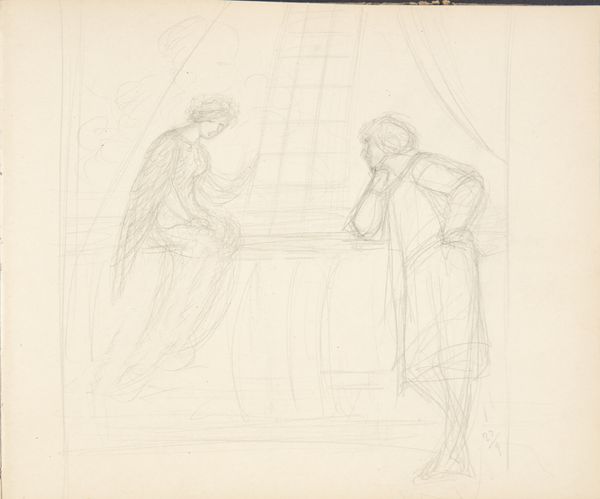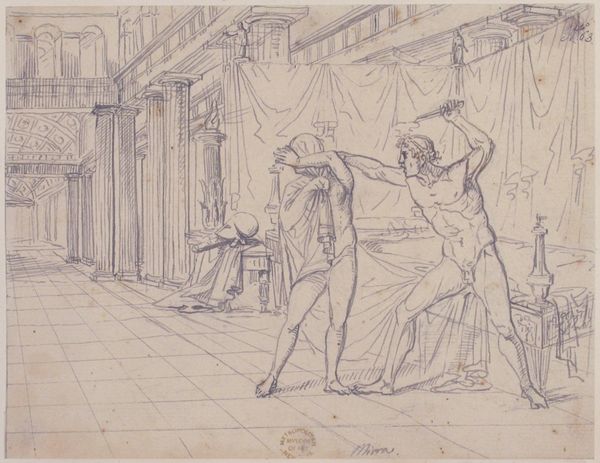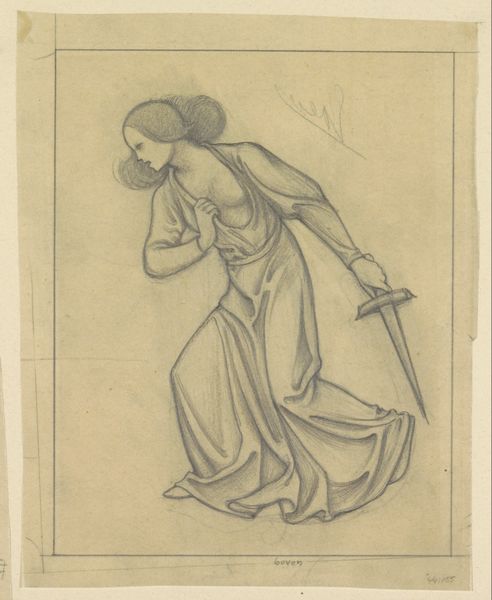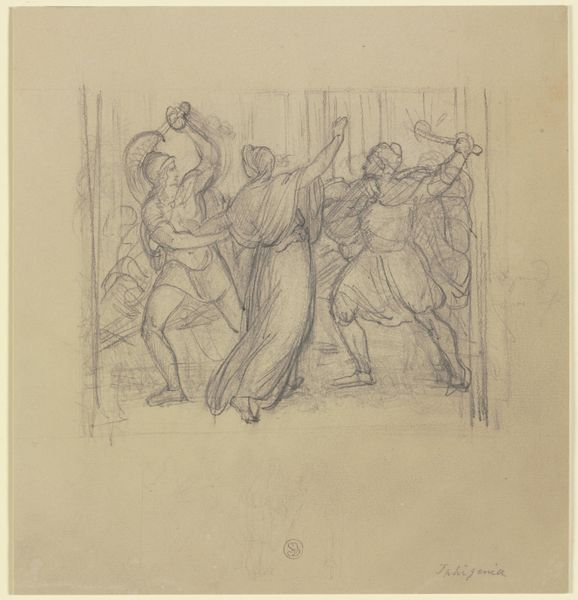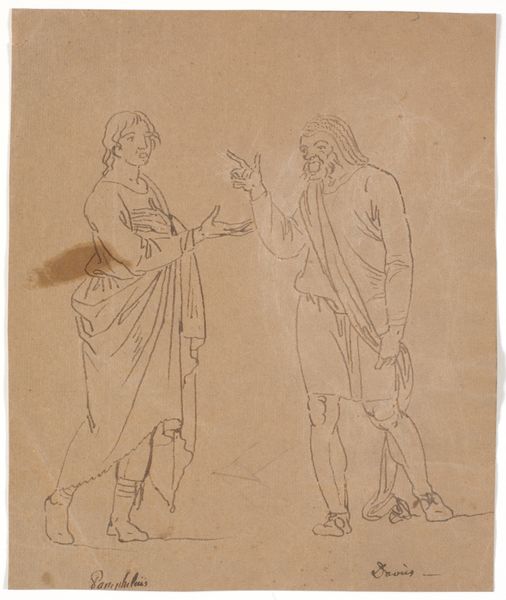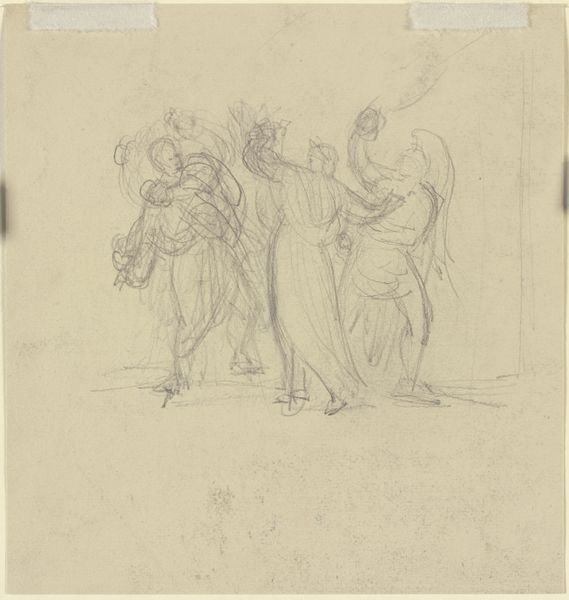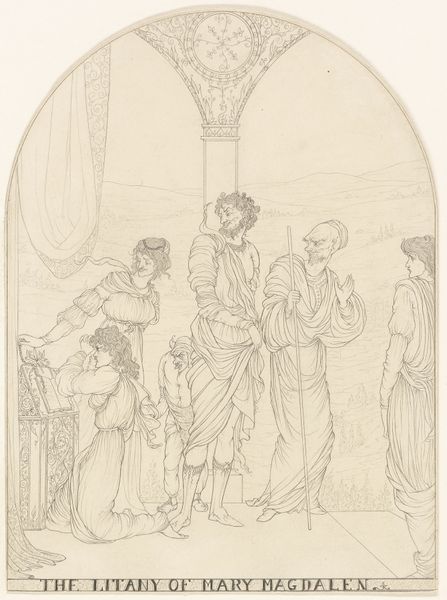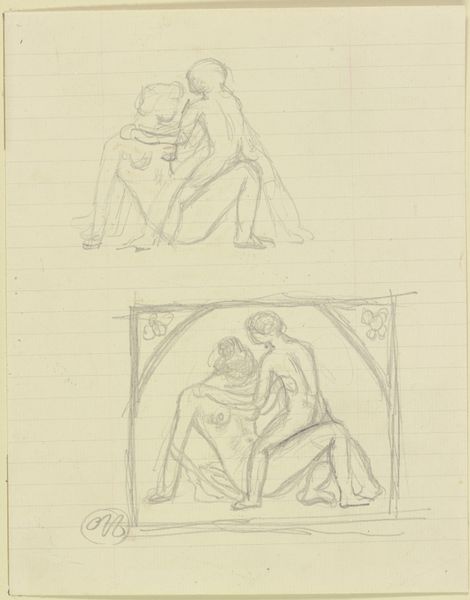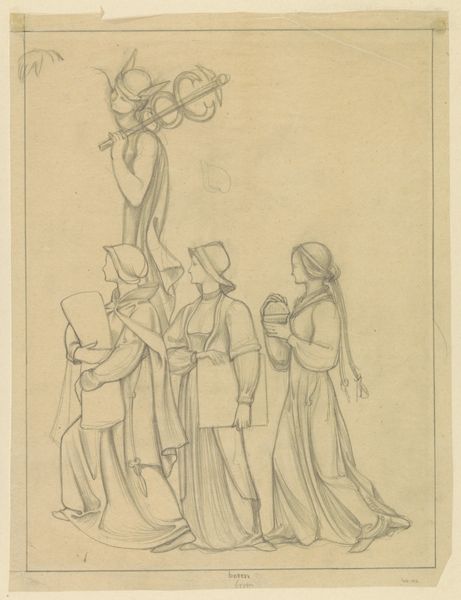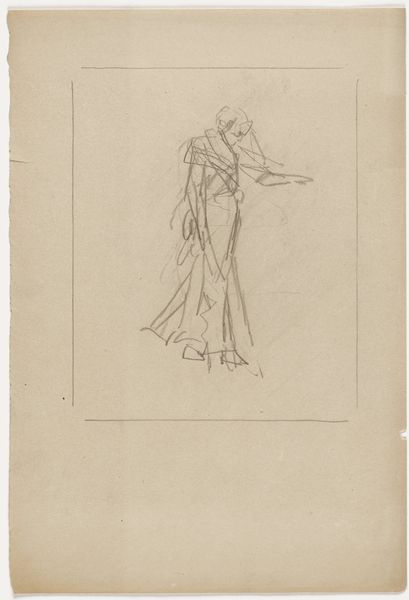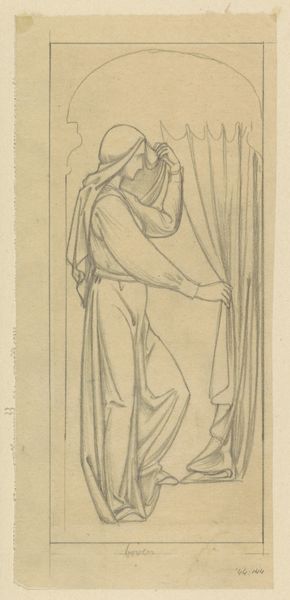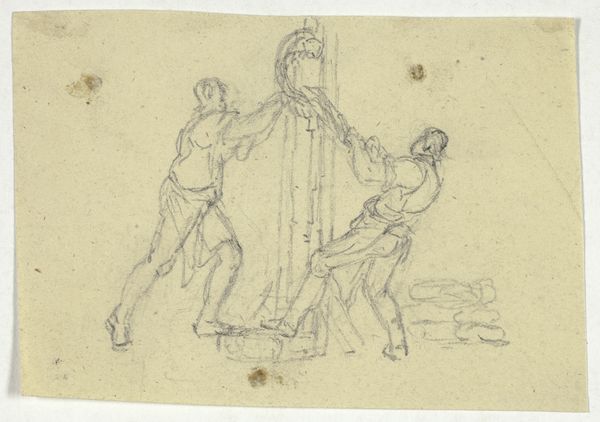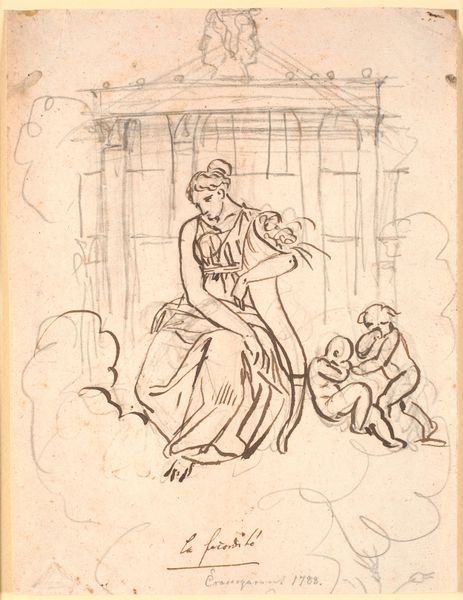
Ontwerp voor wandschildering in de Beurs van Berlage: twee dansende paren 1869 - 1925
0:00
0:00
drawing, pencil
#
drawing
#
pen sketch
#
pencil sketch
#
figuration
#
pencil
#
genre-painting
Dimensions: height 370 mm, width 283 mm
Copyright: Rijks Museum: Open Domain
Curator: Here we have Antoon Derkinderen's preliminary sketch for a mural within the Beurs van Berlage, titled "Ontwerp voor wandschildering in de Beurs van Berlage: twee dansende paren" dating roughly from 1869 to 1925. He rendered the piece with pencil. Editor: My initial thought is how graceful the composition appears, despite the preliminary nature of the drawing. The figures seem to float. Curator: Exactly. It offers insight into the public role art served within burgeoning capitalist structures of the Beurs, or stock exchange. Derkinderen won the commission to create murals, decorative pieces meant to uplift and inspire the public in this hub of commerce. Editor: Right, these dancers could be interpreted as representing community, possibly social mobility…a sense of optimistic interconnectedness rendered during times of rising inequality, perhaps to mask more pressing tensions. Are we meant to focus on the movement and connection or to turn away from what the Stock Exchange represented? Curator: Precisely. While not overt, Derkinderen engaged with contemporary movements towards socialism. Here we have an idealistic and hopeful symbol rendered on the wall of a very controversial building which stood as a symbol of globalism. His choice of dance as a motif underscores the desired societal harmony he was attempting to promote in the project. Editor: These figures aren’t just dancing; their very forms and implied motions create flowing lines that suggest movement is an integral, fundamental component. But their gestures read a little dated given when this sketch was made. Almost like he is leaning on tropes of a prior era of "community". The drawing reminds us that representations of joy aren't immune from reinforcing problematic structures if examined closely. Curator: Derkinderen's historical revivalism connects with an increased desire for national art and a rejection of modernism, which the elite thought to be "too French." We can clearly observe how aesthetics were always intertwined with political objectives. Editor: Thank you. Examining the tension and harmony in pieces like these offers necessary context for thinking about what stories public works communicate now, and at whose expense they may come. Curator: I agree. This allows for deeper examination of the social currents which underpinned Derkinderen's commissioned work.
Comments
No comments
Be the first to comment and join the conversation on the ultimate creative platform.
